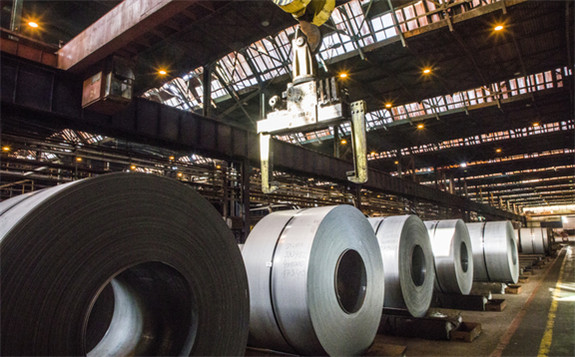
Climate change could cause steel sector's profits to melt away
The carbon bubble just keeps getting bigger and bigger. First debate over the 'stranded assets' theory - the assumption that in a low-carbon transition investors and companies left stuck with high carbon assets could see their valuations plummet - revolved around oil, gas and coal assets.
Then it moved on to the shipping sector, with a paper released earlier this month warning investors in oil tankers and 'dry bulk' vessels could be left financially adrift if efforts to limit global temperature rises to under 1.5C succeed.
The hypothesis has also been applied to the meat industry, where vegetarian diets are deemed a major threat to future demand, and the auto sector, with Peugeot's boss Carlos Tavares telling the Financial Times only yesterday that carmakers that miss the EU's emissions targets will face serious damage to their share prices and reputations. "The reality is that some people may have big surprises about the gap between the equity story and the reality of what's going to happen," he told the paper.
And now the same logic is being applied to the steel industry. A new report released today by CDP warns that steel companies could face "significant" financial losses if they fail to curb their emissions in line with global climate change targets.
Steel dominates the global metals industry, making up 90 per cent of all metal produced in the world. But making steel is a carbon-intensive process, and the industry is responsible for between seven and nine per cent of global greenhouse gas emissions.
The sector is not currently reducing its emissions fast enough to minimise global warming to below 2C, with cumulative company targets suggesting the sector will cut emissions by 50 per cent by 2050, compared to a Paris Agreement-aligned goal of 65 per cent. In fact, only two out of the 20 companies analysed in the paper have set emissions targets aligned with a 2C trajectory or below.
This high carbon footprint could be the steel sector's downfall, according to the report, which warns that the world's 20 largest steel companies could on average lose 14 per cent of their value if they fail to enhance their emissions reduction efforts.
The projections are based on the assumption of a $100 per tonne carbon price by 2040 being applied to steel production - a not-so-distant prospect given that 86 per cent of the sector's greenhouse gas emissions are already covered under existing or planned carbon markets.
"The pace at which the steel sector is reducing emissions is too slow for the transition to a low-carbon economy and it needs to deploy and commercialise radical technologies if it is to avoid looming carbon costs and remain competitive," warned Luke Fletcher, senior analyst at CDP. "Recent events at British Steel are an example of the huge financial risks the sector faces and companies need to show evidence that strategies are being adopted to ensure resilience for the changes ahead."
Chinese, Russian, and US companies would be worst hit, the paper suggests, as they have lag behind on environmental disclosures compared to European and East Asian companies, which have been more proactive in setting carbon targets and developing new technologies.
And it's not just transition risks these firms face. They are also set to be hit by the physical impacts of climate change, such as droughts. The report points out that inland steel companies will struggle to source the vast amounts of water they need for their operations in a more unstable climate, with firms in China and India most at risk.
For steel companies to turn the tide and ensure they can thrive in a low-carbon future, they must "radically" re-mould their business models, CDP insists. Yet small changes won't be enough; steel production techniques are already pushing up at the limits of efficiency, and achieving deep emissions cuts will require more radical changes such as switching to hydrogen fuel, investing in carbon capture and storage (CCS) technologies, and using more recycled metal, the report argues.
Six of the 20 firms analysed are already making changes, CDP reported, including four - ArcelorMittal, Baoshan Iron & Steel, Beijing Shougang, and Inner Mongolia Baotou Steel - that have struck a partnership with carbon recycling company Lanzatech which uses waste gases from steelmaking and converts them into bioethanol.
Steel firm SSAB, meanwhile, has promised to hit net zero emissions across its business by 2045, while ArcelorMittal has promised to be net zero by 2050 and has invested heavily in new technologies such as CCS. SSAB topped CDP's ranking as the firm most prepared for the low-carbon transition, followed by ArcelorMittal, Hyundai Steel, and Tata Steel. Yet many of the top five are still flagged as having significant vulnerability to climate change's physical impacts and low-carbon transition risks.
Unlike the oil and gas sector, the carbon bubble hypothesis doesn't necessarily spell the end of days for the steel sector. But it does provide a stark warning that without radical action steel, like many other carbon intensive industries across the global economy, will face serious climate-related challenges in the years to come unless it cleans up its act.